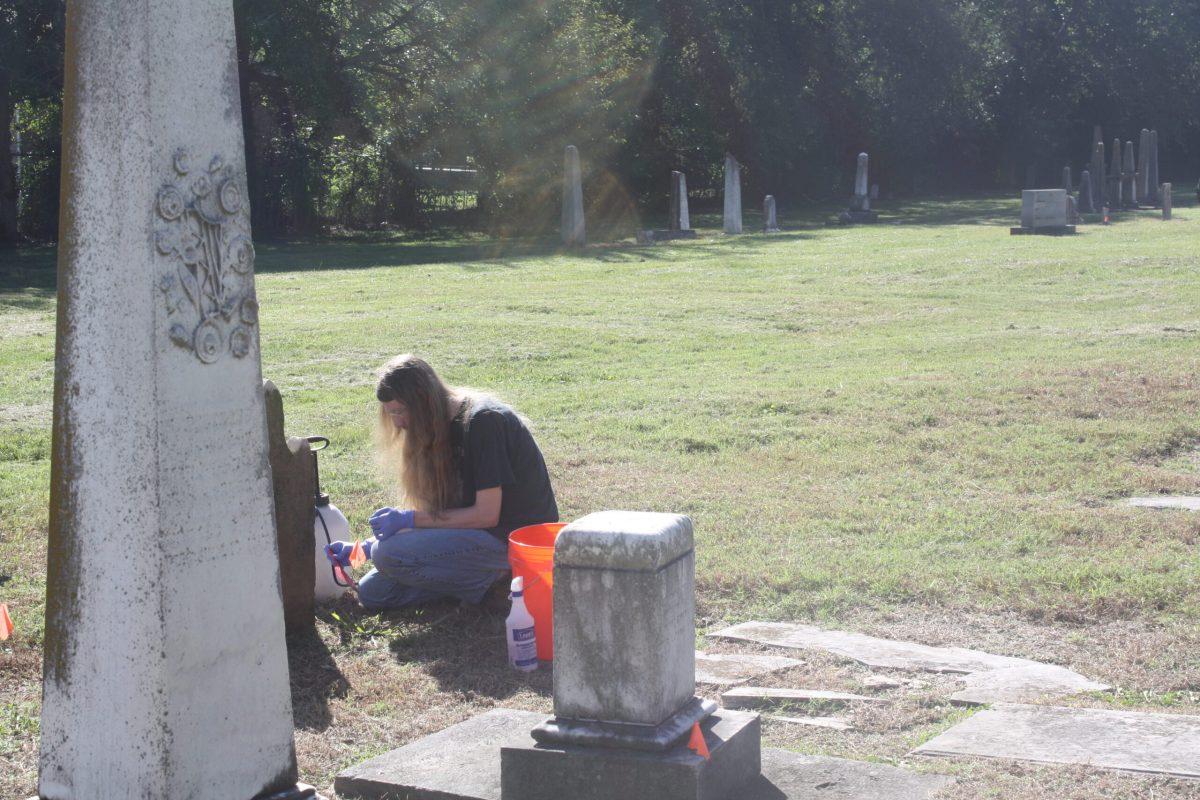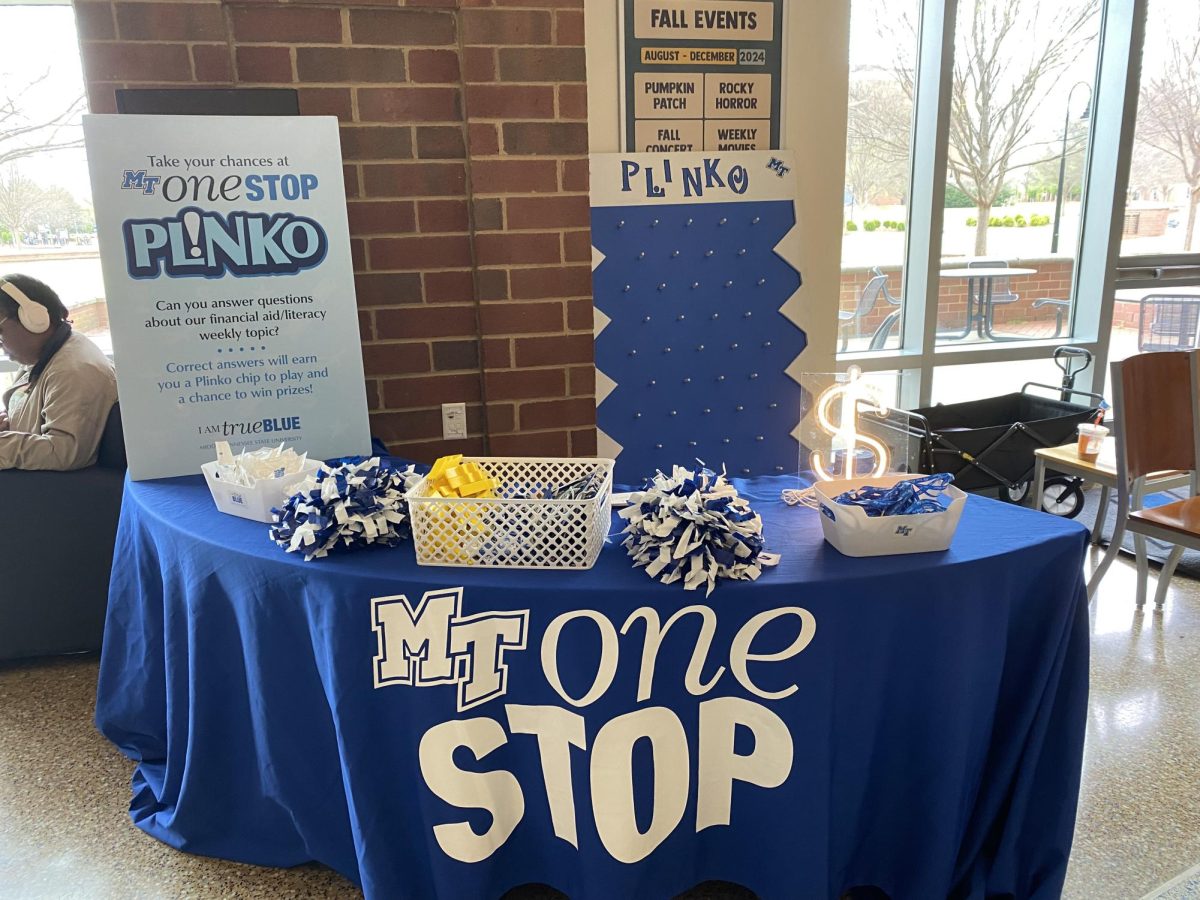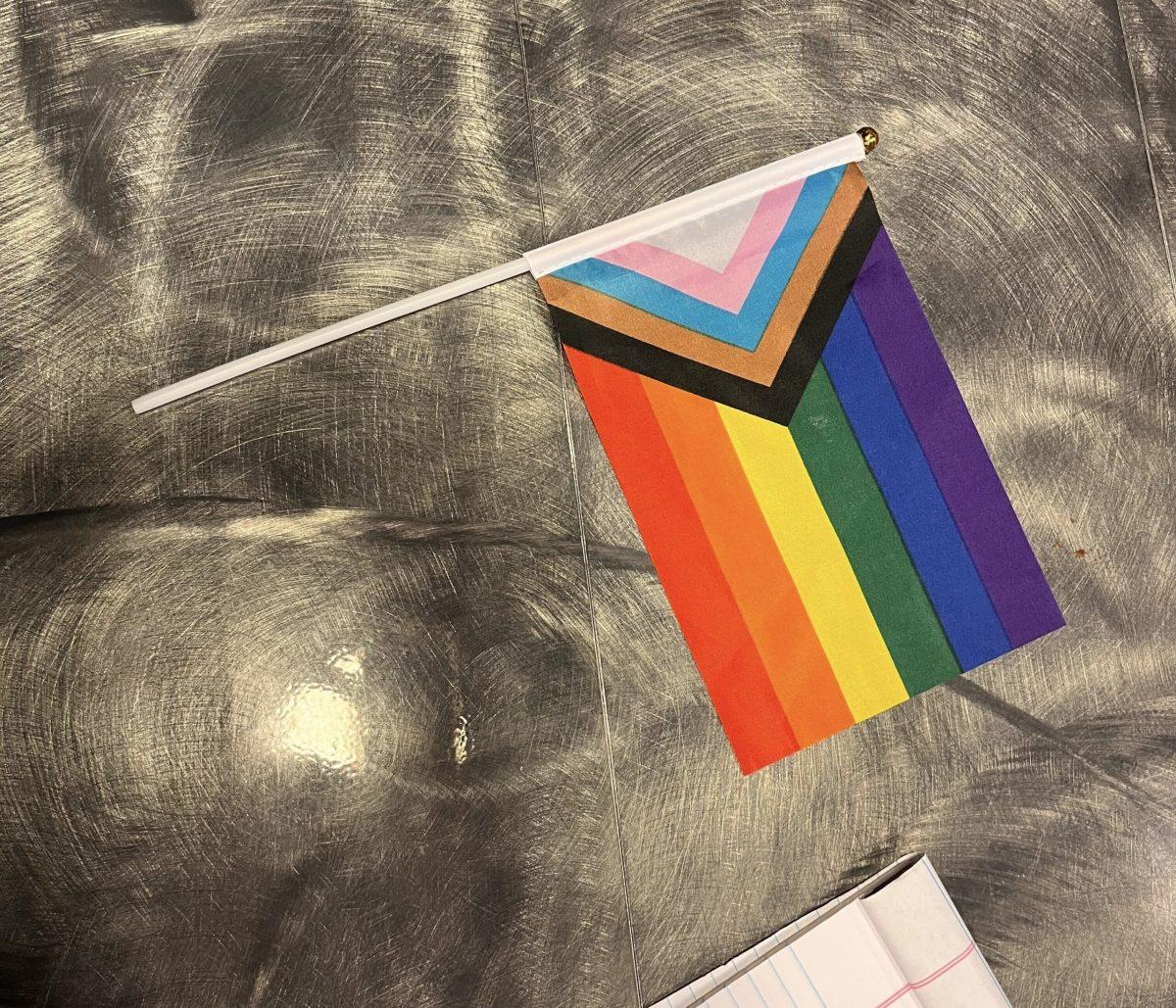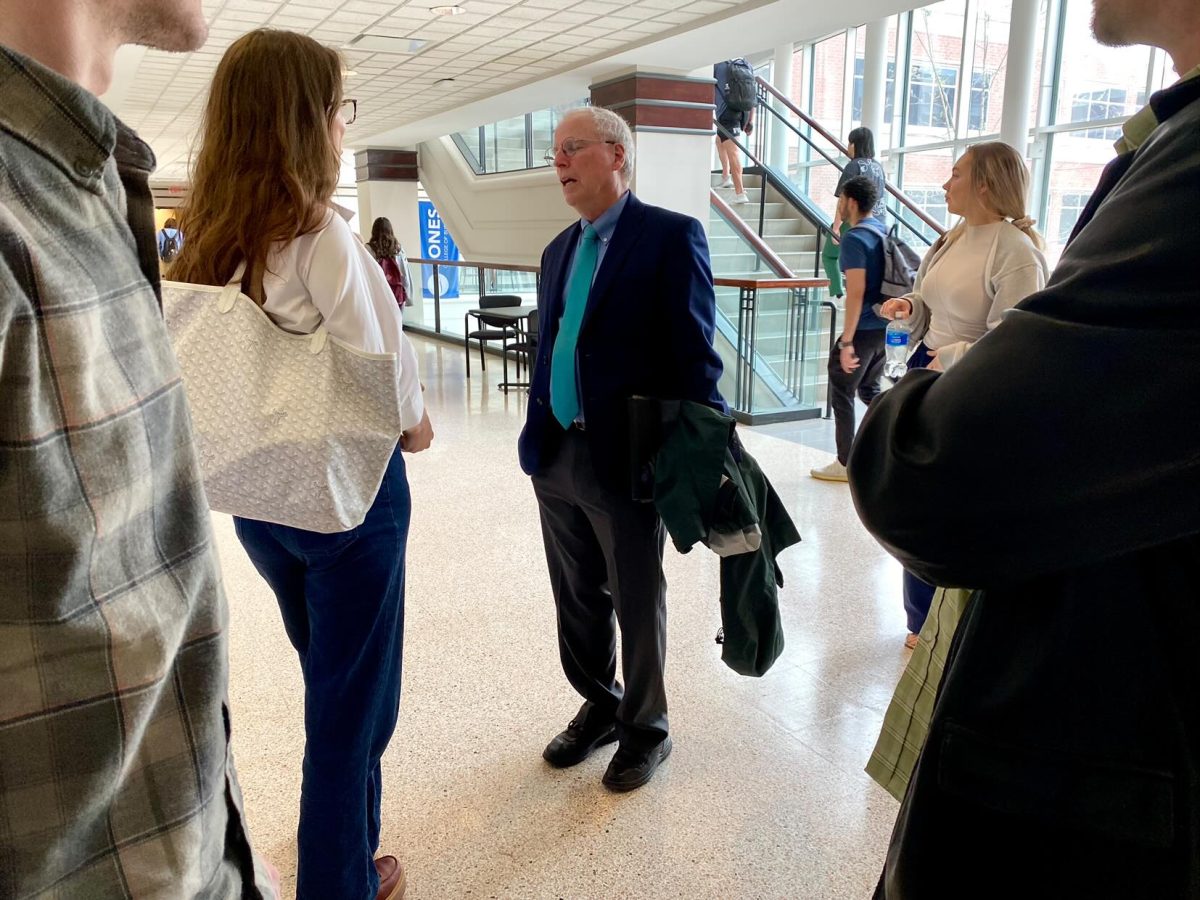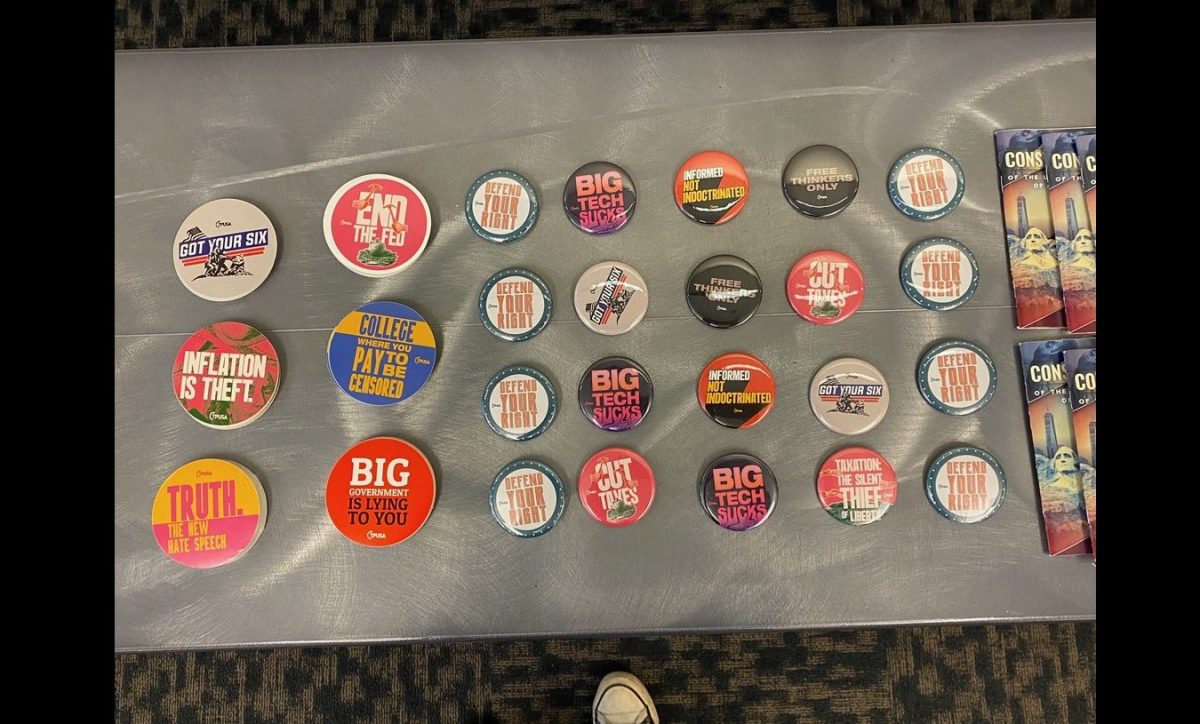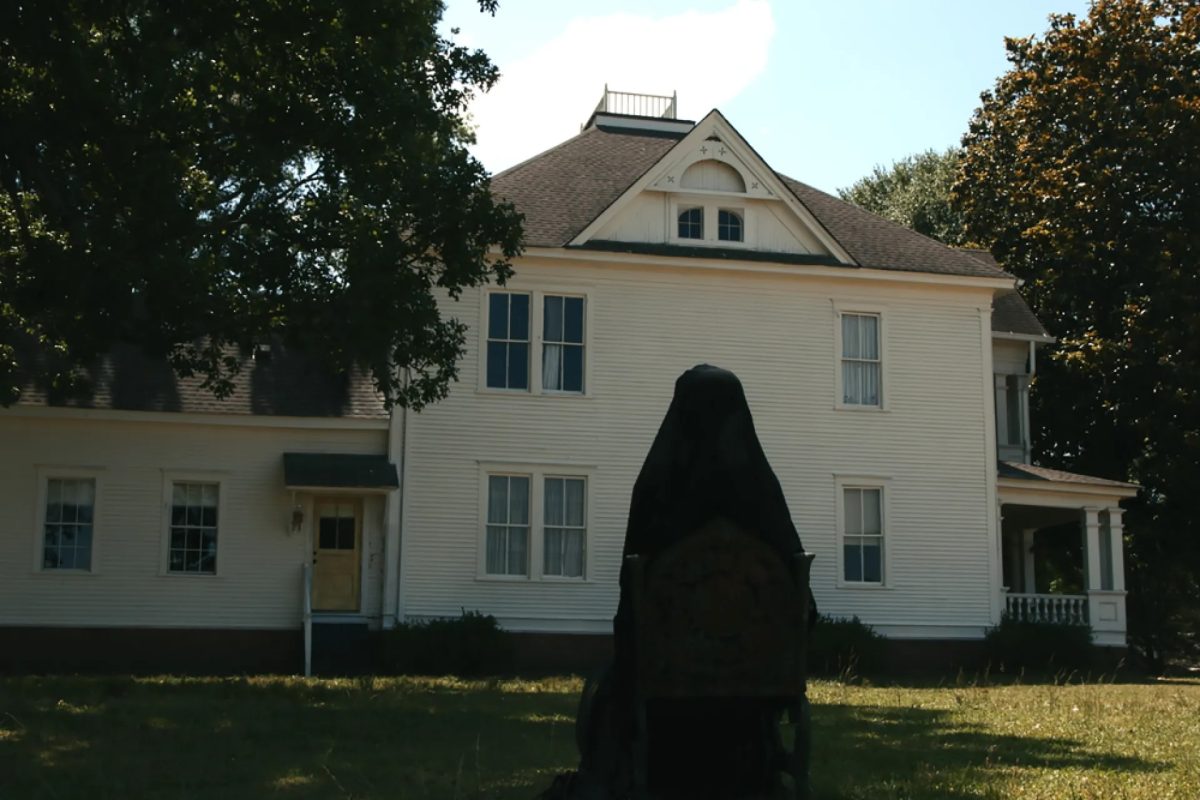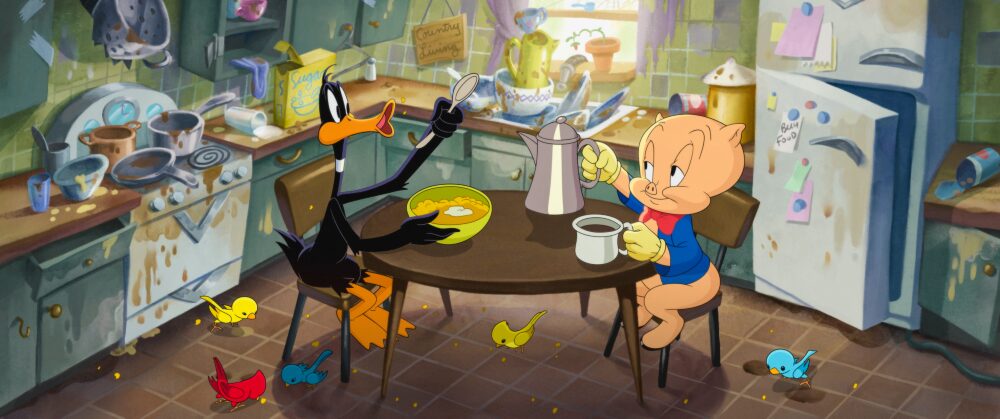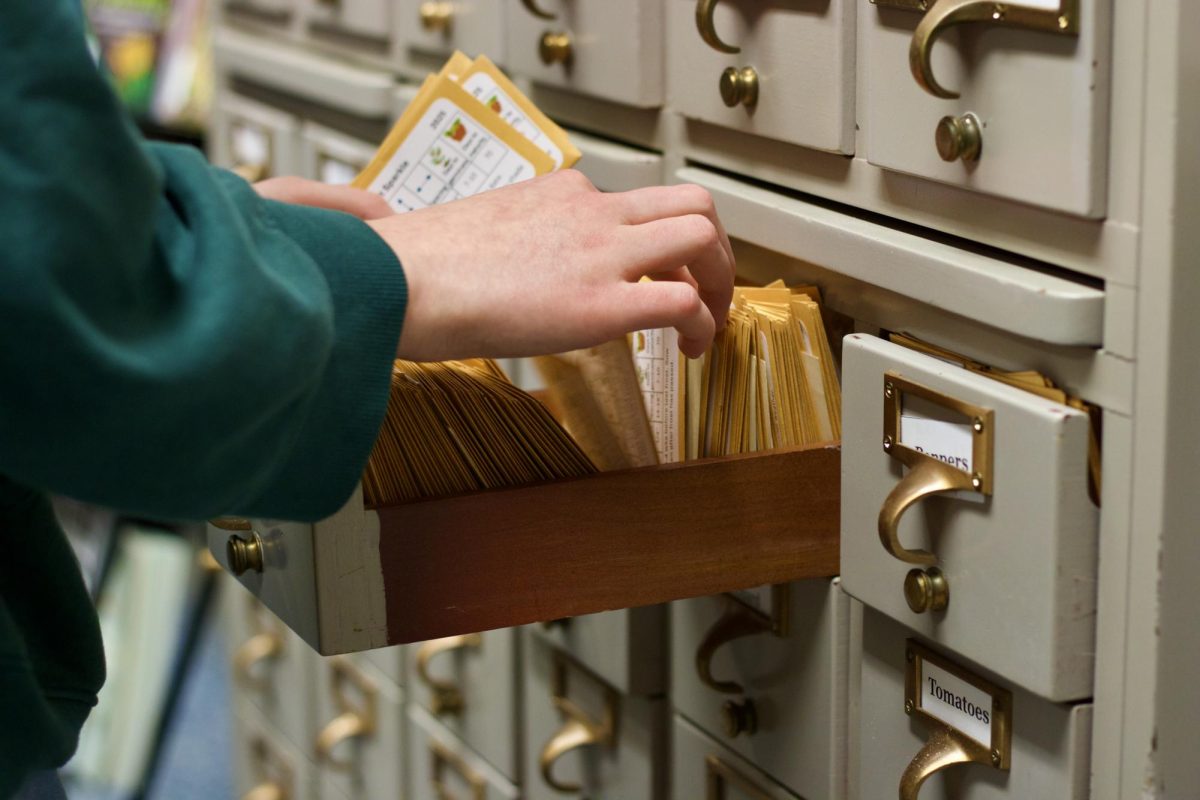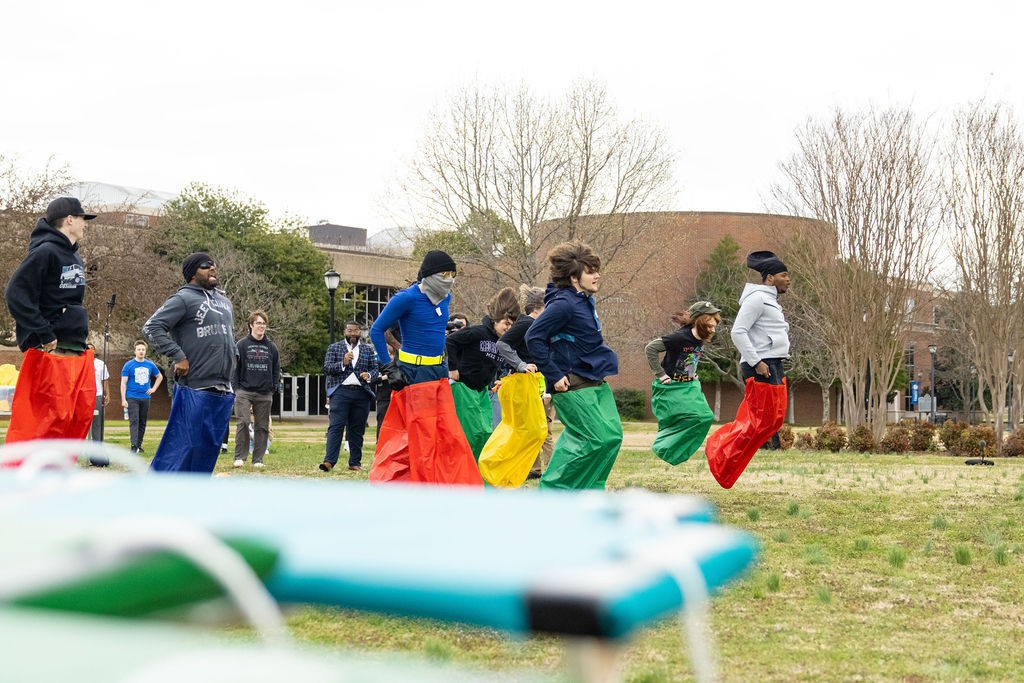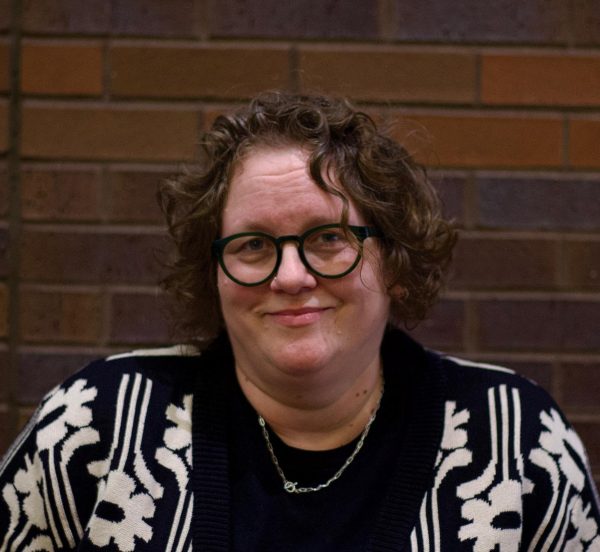Friday morning, a small group of students assembled at Old City Cemetery in Murfreesboro, Tennessee. The sun blazed bright above them while giant stumps hinted at the shade they could have been working under. They were there to perform a simple task — spray, wait, brush and scrape. The process removes organic matter from the surface of stone markers and in turn reveals centuries of Murfreesboro history.
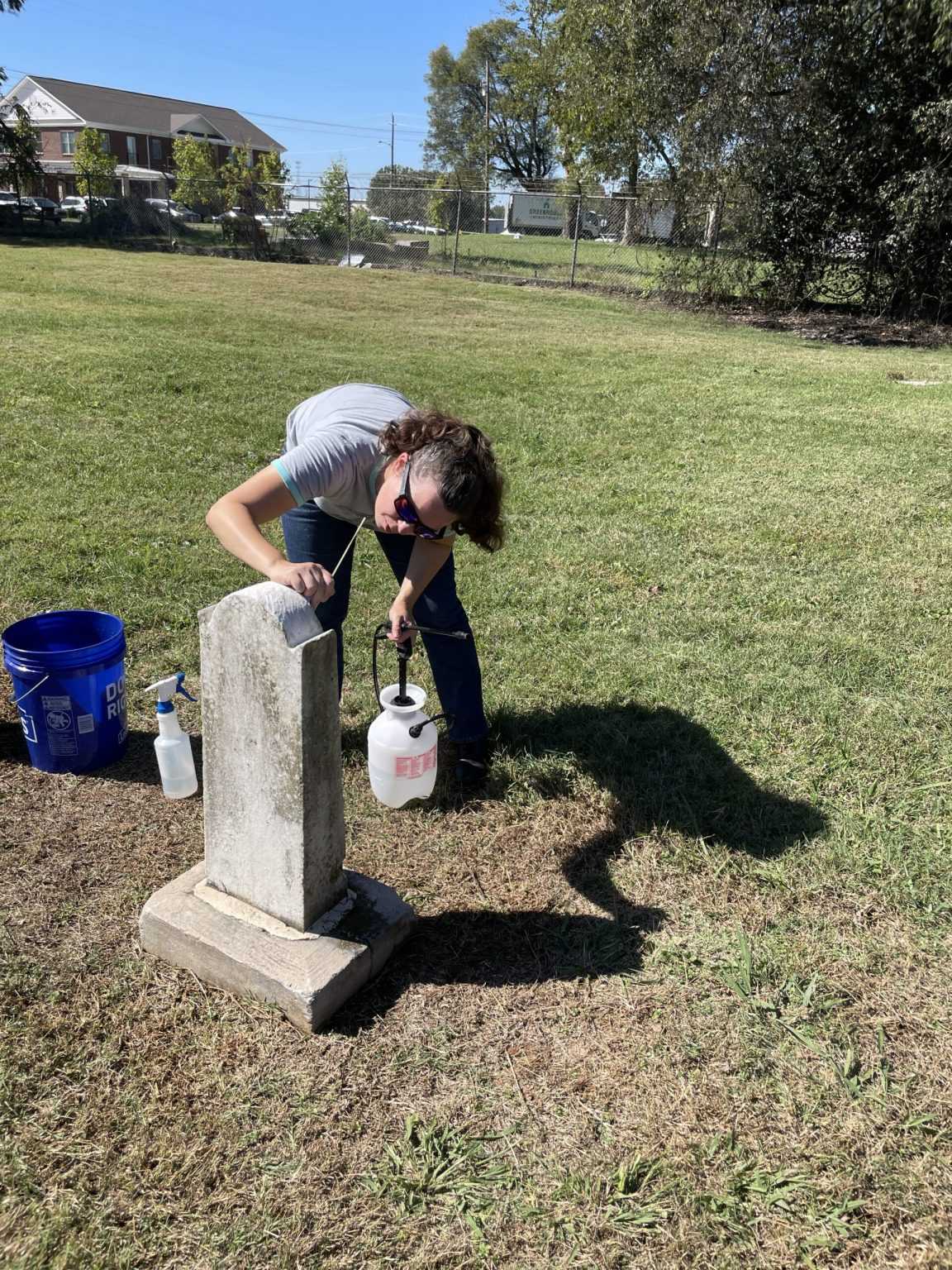
Center for Historic Preservation research professor Stacey Graham usually holds cemetery preservation workshops for members of nearby communities, but after students expressed interest, she arranged a workshop as a part of MT Engage week.
“This was the first time that I decided to do one for MTSU undergraduates, just to give them kind of more hands-on experience,” Graham said. “We had such bad weather a couple weeks ago that I promised them a redo.”
The late September workshop started indoors, where Graham taught students about the tools and techniques required for headstone restoration. A chemical solution called D/2 helps loosen years of natural graffiti from the stones. Cleaners then use water, bamboo skewers, natural bristle brushes and plastic scrapers to remove mold, lichens, mildew and other biological debris from the surface of grave markers. These effective techniques are also used by the National Parks Service and Department of Veterans Affairs.
Heavy rain brought by Hurricane Helene complicated the outdoor portion of the MT Engage workshop. So, on Friday, some of the group made their way back to the cemetery. Students gathered their supplies and quickly scattered around to work independently. They all expressed different motivations to be there. For some, the highlight of headstone cleaning is the physical work itself.
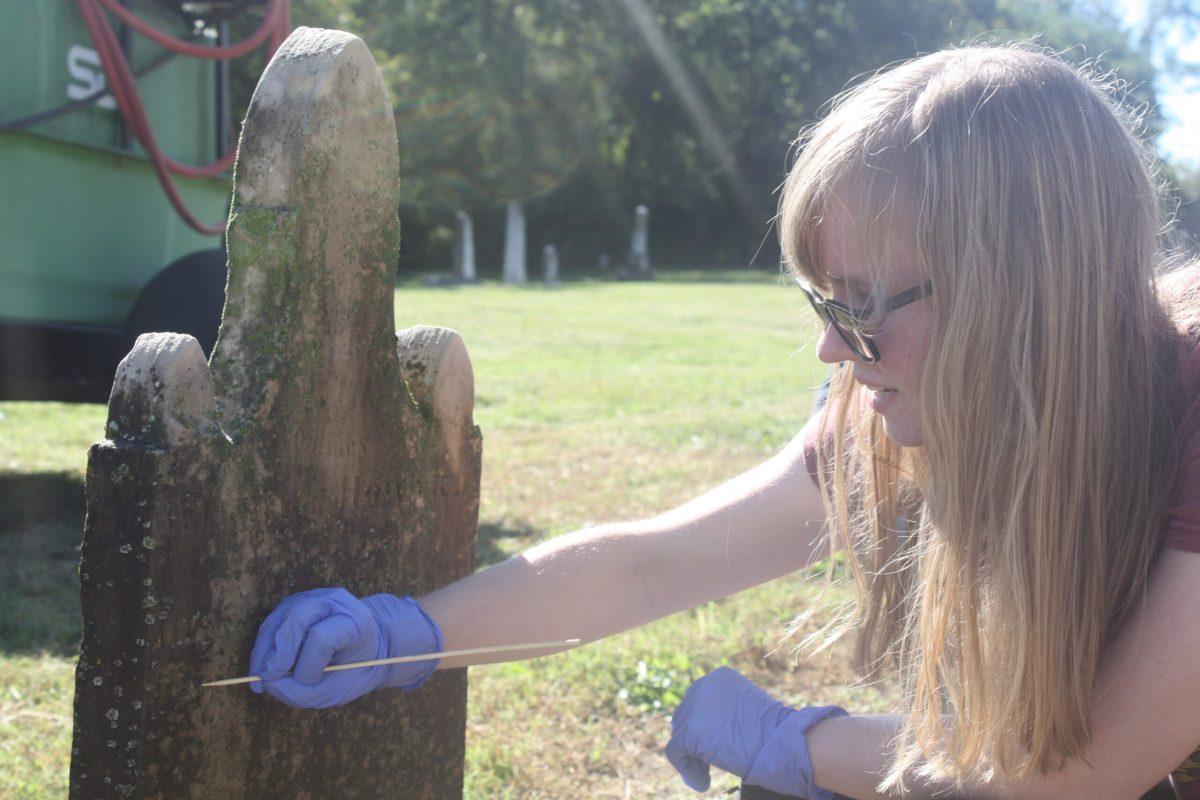
“It’s both interesting and satisfying,” Madalyn Dawson said. “I’ve always wanted to do this.”
Dawson, a graduate student studying public history, was familiar with the process after watching grave cleaning videos on YouTube and TikTok, she said.
Dawson traced the carving on the front of a stone with a bamboo skewer, gently removing years of organic growth caked inside. The angle of the sun made the inscription difficult to read.
“There’s a ‘B’ there,” Dawson said. “So that probably is saying, like, born sometime, right?”
A fascination with and desire to protect historical sites and artifacts nudged others to participate.
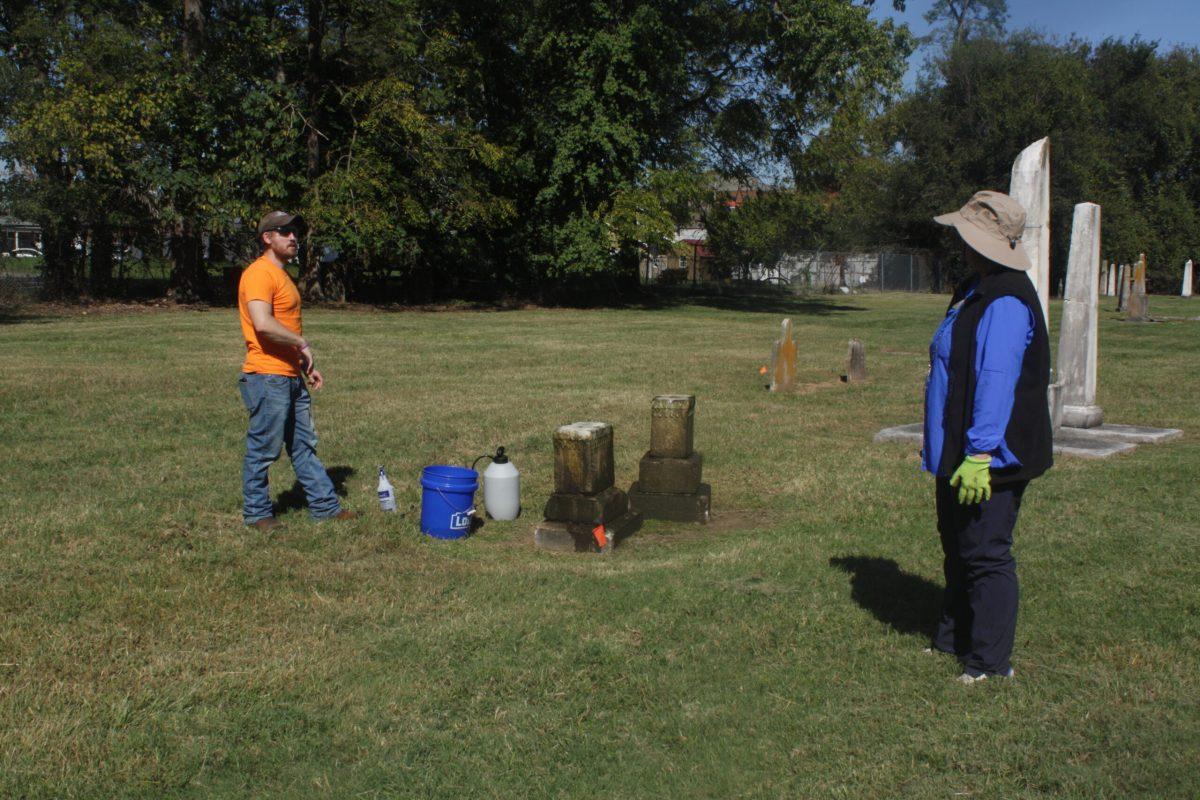
“You have to preserve history as much as possible,” Zach Johnson, a junior history major, said. “Because if you don’t, it will be forgotten.”
Johnson hopes to continue preserving history by working at a Civil War battlefield after he graduates.
“Regardless of where these people came from,” Johnson said, “It’s always nice to keep their memory intact.”
Laura Bartel, founder and executive director of the Rutherford County Archeological Society, joined the students to provide guidance and historical context.
“After the Civil War, everything was vandalized,” Bartel said. “The history of the cemetery is one of neglect and vandalism.”
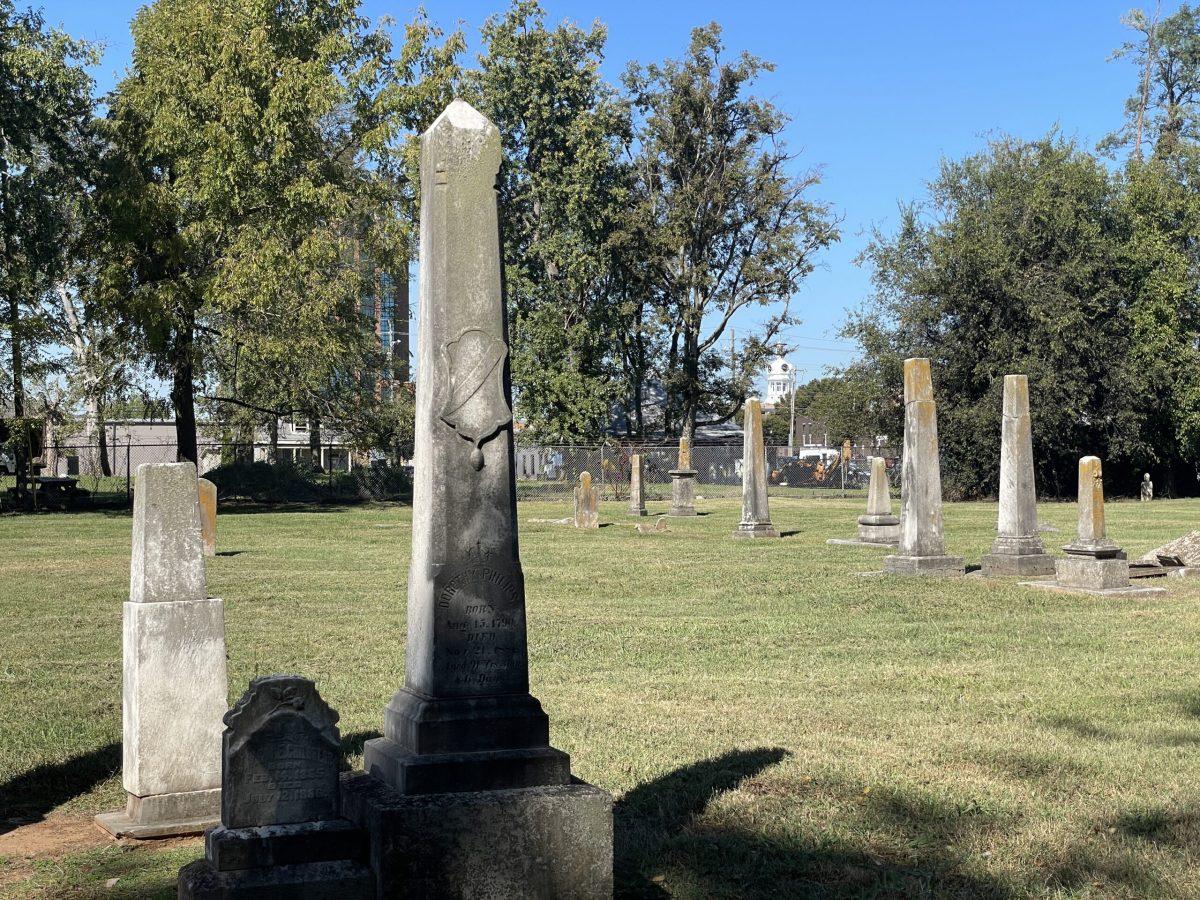
The cemetery’s history, like that of much of the city, runs centuries deep. Enslaved people, Civil War soldiers, and members of some of Murfreesboro’s founding families are interred within the gates. Many grave markers have been destroyed or buried over the years. The last burial in Old City Cemetery was in 1931. It’s rare for families to continue caring for tombstones generation after generation, Graham said.
“Legally, these tombstones and the graves are the property of the descendants,” Graham said. “And so it’s supposed to be their responsibility to pay for and fix tombstones. But of course, people move away and people die off.”
The city maintains the cemetery lawn, leaving the rest of the care in the hands of preservationists.
“I feel like it’s nice to be able to take part in that and try to upkeep it,” junior history major James Long said. “I just feel like it’s a waste to not keep that stuff around. I like keeping stuff for posterity.”
To contact the Lifestyles Editor, email lifestyles@mtsusidelines.com. For more news, visit www.mtsusidelines.com, and follow us on Facebook at MTSU Sidelines and on X and Instagram at @mtsusidelines. Also, sign up for our weekly newsletter here.


